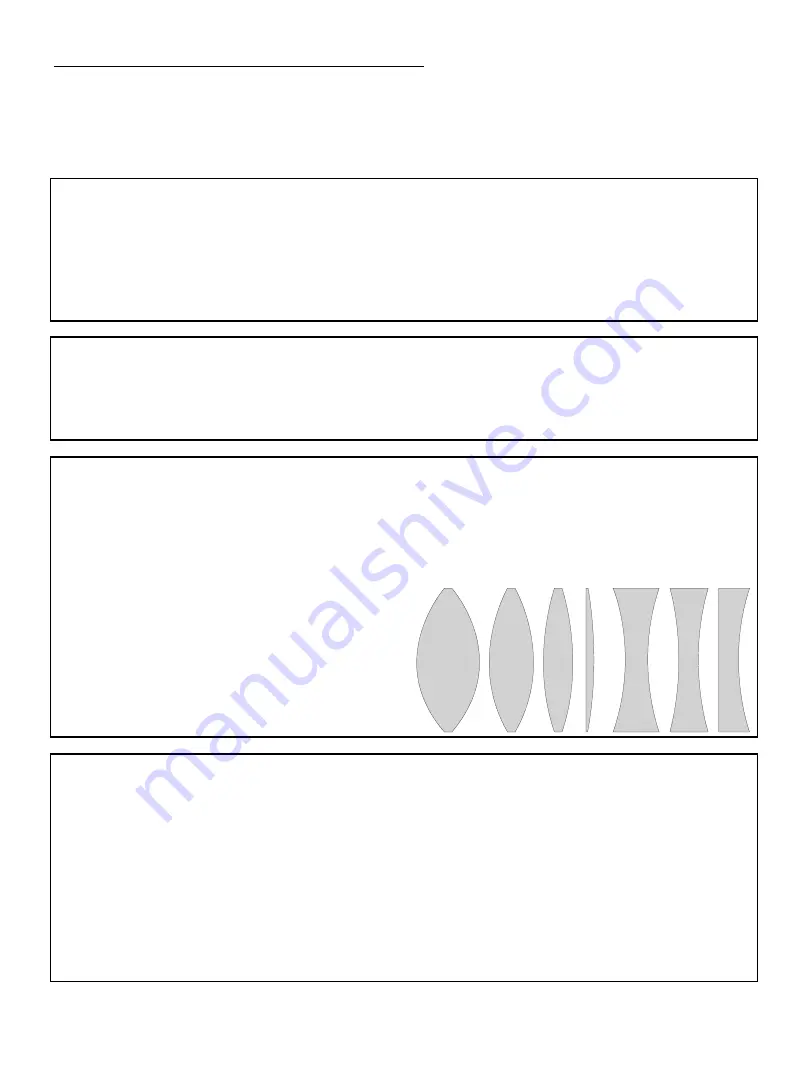
22
© Arnulf Betzold GmbH
5. Experimenting with LED spotlights, lenses and activity cards
You will find different experiments and matching solutions under point 5 and 6. Please pay attention to the warning information
and appropriate use mentioned on page 16 of the manual. While experimenting, the classroom should be shaded in order to see
the light beams and focal points.
5.1 Experiment “converging or diverging lens?”
(Use activity card no. 1, LED spotlight and optical lenses no. 1 – 7)
Turn on the LED spotlight and lay it on the indicated, dashed line on the activity card.
1. Test one lens after the other by laying them on the designated lens field. What are the results?
2. Afterwards separate the optical lenses into 2 groups. Which similarities do the lenses of one group have?
3. Match the following definitions to the lenses: converging lens (convex lens), diverging lens (concave lens)
5.2. Experiment „testing light refraction“
(Use activity card no. 1, LED spot light and optical lenses no. 1 – 7)
Try different experiments with the LED spotlight and the lenses by arranging them in a row.
What do you notice?
5.3 Experiment “defective vision I”
(Use activity card no. 2, LED spotlight and optical lenses no. 1 – 7)
Turn on the LED spotlight and lay it on the indicated, dashed line on activity card no. 2.
Place optical lens no. 2 as an eye lens on the designated field. Answer the following questions:
1. What type of lens is the eye lens?
2. Where is the focal point?
3. Is there a visual defect? If yes, which kind?
4. Which type of lens do you need to move the focal point onto
the retina? Choose a lens and put it in the field.
5. What results can be seen? Test further lenses.
6. Would it be wise to use eyeglasses here? What shape
should the eyeglass lenses have?
5.4 Experiment “defective vision II”
(Use activity card no. 3, LED spotlight and optical lenses no. 1 – 7)
Turn on the LED spotlight and lay it on the indicated, dashed line on activity card no. 3.
Place optical lens no. 2 as an eye lens on the designated field. Answer the following questions:
1. What type of lens is the eye lens?
2. Where is the focal point?
3. Is there a visual defect? If yes, which kind?
4. Which type of lens do you need to move the focal point onto the retina? Choose a lens and put it in the field.
5. What results can be seen? Test further lenses.
6. Would it be wise to use eyeglasses here? What shape should the eyeglass lenses have?
Nr. 1
Nr. 2
Nr. 3
Nr. 4
Nr. 5
Nr. 6
Nr. 7
















































